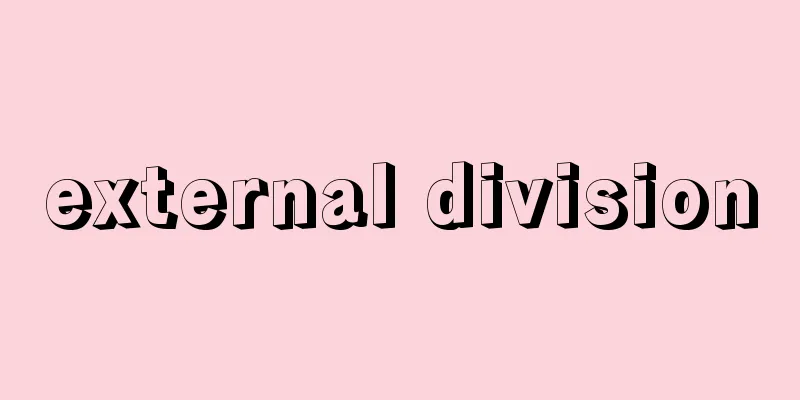Proletarian Theatre - Proletarian Theatre

|
This refers to the theatrical movement by workers themselves or the theatrical movement aiming at the liberation of the working class, which developed in countries around the world in the 1920s and 1930s against the backdrop of the development of the labor movement after World War I, and in particular the success of the Russian Revolution. The International Workers' Theatre Association (IATB, later renamed the International Revolutionary Theatre Association) was formed in 1930 (Showa 5), and was active in the former Soviet Union, Germany, Japan and other countries, but its nature and appearance were not uniform. In Japan, socialists began to try to create educational and entertaining theatrical performances for workers around the end of the Meiji period. The first early movement in proletarian theater was the formation of the Japan Labor Theater at the Kobe Kawasaki Shipyard in 1920 (Taisho 9). In response to this, the following year, trade union activist Hirasawa Keishichi organized a Labor Theater in downtown Tokyo, which performed his own scripts. On the other hand, in response to these theatrical activities by workers, Kaneko Yobun, Sasaki Takamaru and other members of the Sower of Seeds and other literary figures from the proletarian literature movement also began to take part in theatrical activities, and in 1923, Akita Ujaku and others formed the Pioneer Theater. After the Great Kanto Earthquake (1923), people based in the Japan Proletarian Literary Federation, which was formed in 1925, centered around the former members of the Sower of Seeds, began to perform in a traveling theater style called the Trunk Theater. The following year, Pro-ren was reorganized as the Japan Proletarian Arts League (Progei), and a drama club was also established. Members of the drama club took the lead in founding the Zen'ei-za, a group based on a Marxist worldview and aimed to engage in theatrical activities through full-scale performances rather than traveling theaters. At the end of the same year, the group held its first performance of Lunacharsky's "Liberated Don Quixote," which was well received and shook the status of the Tsukiji Little Theater. Zen'ei-za split up after just six months due to conflicts within the proletarian literature and theater movement, but with the founding of the All-Japan Proletarian Arts League (NAP) in 1928 (Showa 3), the two groups moved forward in merging and unifying, and a left-wing theater was born under its umbrella, with Murayama Tomoyoshi, Hisaita Eijiro, Sano Seki and others active in the fields of literature and directing. Furthermore, in 1929, the reorganization of NAFF led to the formation of a nationwide theater organization, the Japan Proletarian Theater Alliance (Plot, later the Japan Proletarian Theater Alliance), which was based on a Marxist perspective and the creative methods of proletarian realism that emphasized realism, and was active in appealing to a new audience of workers and farmers through a variety of performance styles and techniques, leading to the heyday of proletarian theater in the early 1930s. Works such as Murayama's "The Yakuza Chronicle," Tokunaga Sunao's "A Town Without the Sun," Remarque's "All Quiet on the Western Front," and Tretyakov's "Roar, China" are masterpieces that decorate the history of Japanese proletarian theater. However, the authorities intensified their repression, including advance censorship of scripts, deletion, banning of performances, and arrest of members, and by 1958 performance activities had become extremely difficult, and the movement sought to change direction, but in July of the following year Plot was forced to disband. In the same year, at the suggestion of Murayama's new theater company Daido Danketsu, the Shinkyo Theater Company was launched, ushering in an era of coexistence with the Shintsukiji Theater Company, but both were forcibly disbanded in 1965. In general, Japanese proletarian theater had weaknesses, such as an excessive formal and mechanical emphasis on the class nature of theater, being trapped in a diagram of the conflict between proletarian theater and bourgeois theater, neglecting theatrical heritage both at home and abroad, and being immature in united front tactics, but it occupies an indispensable place in the history of Japanese theater in that it attempted and achieved the groundbreaking project of unifying social change and theatrical creation. [Shoji Sobue] "New Japanese Drama History, Volume 2" by Akiba Taro (1956, Risosha)" ▽ "New Japanese Drama History: New Drama Poverty Stories" by Matsumoto Katsuhira (1966, Chikuma Shobo)" ▽ "History of Socialist Japanese Drama: Meiji and Taisho Periods" by Matsumoto Katsuhira (1975, Chikuma Shobo)" ▽ "Plot Bulletin and Paper" edited by Sobue Shoji (1983, Battle Flag Reprint Publishing Association)" [References] |Source: Shogakukan Encyclopedia Nipponica About Encyclopedia Nipponica Information | Legend |
|
第一次世界大戦後の労働運動の進展、とくにロシア革命の成功を背景として1920~30年代に世界各国で展開された、労働者自身による演劇運動あるいは労働者階級の解放を志向する演劇運動をいう。1930年(昭和5)には国際労働者演劇同盟(略称IATB。のち国際革命演劇同盟と改称)も結成され、旧ソ連、ドイツ、日本などで盛んであったが、その性格、様相は一様でない。 日本では、明治末年から主として社会主義者により労働者のための啓蒙(けいもう)的、慰安的な演芸活動が試みられたが、プロレタリア演劇の初期の動きとしては、まず1920年(大正9)神戸川崎造船所での「日本労働劇団」の結成、これに呼応して翌年、組合活動家平沢計七が東京の下町に組織し、自作脚本を上演した「労働劇団」の活動がある。他方、これら労働者による演劇活動に対し、プロレタリア文学運動側から金子洋文(ようぶん)、佐々木孝丸(たかまる)ら『種蒔(ま)く人』同人とその周辺の文学者たちも演劇活動を開始し、23年には秋田雨雀(うじゃく)らの「先駆座」が生まれた。関東大震災(1923)後には、旧『種蒔く人』同人を中心に25年に結成された日本プロレタリア文芸連盟に拠(よ)る人々が移動演劇形態「トランク劇場」によって活動した。プロ連は翌26年日本プロレタリア芸術連盟(プロ芸)に再組織され、演劇部も設置された。その演劇部員が中心になり、マルクス主義的な世界観にたち、移動演劇ではなく、本格的な公演形態による演劇活動を目的とした「前衛座」を発足させ、同年暮れにルナチャルスキーの『解放されたドン・キホーテ』で第1回公演を行い、築地(つきじ)小劇場の地位を揺るがす好評を得た。前衛座はこののち、プロレタリア文学・演劇運動内部の対立のため、わずか6か月で分裂したが、28年(昭和3)全日本無産者芸術連盟(ナップ)の発足とともに合同・統一が進み、その傘下に左翼劇場が生まれ、村山知義(ともよし)、久板栄二郎(ひさいたえいじろう)、佐野碩(せき)らが文芸・演出に活躍した。さらに29年、ナップ再編成により全国的な演劇組織、日本プロレタリア劇場同盟(プロット。のち日本プロレタリア演劇同盟)が結成され、マルクス主義の観点とリアリズムを強調するプロレタリア・リアリズムの創造方法を基調とし、多様な上演形態や手法を通して労働者・農民らの新しい観客層に働きかける活発な活動を展開し、30年代初頭にはプロレタリア演劇の全盛期を迎えた。村山の『暴力団記』、徳永直(すなお)原作の『太陽のない街』、レマルク原作の『西部戦線異状なし』、トレチャコフの『吼(ほ)えろ支那(しな)』などは日本プロレタリア演劇史上を飾る傑作である。 しかし、上演台本の事前検閲、削除、上演禁止、成員の検挙など官憲による弾圧が強化され、33年ごろには公演活動が極度に困難になり、運動の方向転換が模索されたが、翌年7月プロットは解散を余儀なくされた。同年村山の新劇団大同団結の提唱により「新協劇団」が発足、「新築地劇団」との併立時代を迎えたが、40年ともに強制解散となった。総じて日本プロレタリア演劇には、演劇の階級性を公式的・機械的に強調するあまり、プロレタリア演劇とブルジョア演劇の対立という図式にとらわれ、内外の演劇遺産を軽視し、統一戦線戦術に未熟であるなどの弱点もあったが、社会変革と演劇創造の統一という画期的な事業を試み成果をあげた点で、日本演劇史上、無視できない地位を占めている。 [祖父江昭二] 『秋庭太郎著『日本新劇史 下巻』(1956・理想社)』▽『松本克平著『日本新劇史・新劇貧乏物語』(1966・筑摩書房)』▽『松本克平著『日本社会主義演劇史・明治大正篇』(1975・筑摩書房)』▽『祖父江昭二編『プロット機関誌・紙』(1983・戦旗復刻版刊行会)』 [参照項目] |出典 小学館 日本大百科全書(ニッポニカ)日本大百科全書(ニッポニカ)について 情報 | 凡例 |
<<: Proletarian Music - Proletarian Music
>>: Proletarian Film - Proletarian Film
Recommend
Tethys (geological period) (English spelling)
…At that time, there were no other continents on ...
bombykol
It is the sex pheromone of the silkworm Bombyx mor...
Onshikyoto Museum - Onshikyoto Museum
...In 1889, the establishment of the Imperial Mus...
Hakuryoutai
〘noun〙 (based on the style of "Boliangtai Poe...
Limnoscelis
…(1) The most primitive reptiles do not have a te...
EHD Power Generation - EHD Power Generation
…However, in direct power generation, there are n...
East China - Kato
A large region of China. Refers to the area coveri...
"History of English Law" (Holdsworth)
…He was also active in government-related work. H...
Achromat - Achromat
Please see the "Achromatic Lenses" page...
Agent Orange
A type of herbicide. Known for its use by the US m...
Observations of various family crests - Kenmon Shokamon
The oldest collection of family crests in Japan. A...
Tsunemasa Yoshikawa
Year of death: March 20, 1867 (April 24, 1867) Yea...
Welch, L.
…Adventure novels also developed through J. Masef...
Autoradiography
When a sample containing a radioisotope is exposed...
parasitic castration
…In the old days, a castrated male horse was call...









